RYT-200 Hr Level – 2 Yoga TTC Week-Days
Upcoming Batches
- 10 June 2024 & 20 Jun 2024
- 01 July 2024 & 15 July 2024
- 01 August 2024 & 15 August 2024
- 01 Sep. 2024 & 15 Sep. 2024
- 01 Oct. 2024 & 15 Oct. 2024
- 01 Nov. 2024 & 15 Nov. 2024
- 01 Dec. 2024 & 15 Dec. 2024
Training Venue: J.P.Nagar
Total Fee for the Training(For Indian Citizens Only): INR 08,000(Registration Fee) + INR 37,000 (Course Fee) = INR 45,000
Total Fee for the Training(For Non-Indian Citizens Only): USD 100(Registration Fee) + USD 800 (Course Fee) = USD 900
Professional Yoga Teacher Training
RYT-200 Hr Level - 2
Yoga TTC Weekdays
Are you interested in pursuing a career as a yoga teacher? If so, 200-hour yoga teacher training in Karuna Yoga Vidya Peetham is the perfect starting point. Our 200-hour yoga teacher training in Karuna Yoga Bangalore is designed to provide a comprehensive understanding of yoga and its various practices, techniques. The program covers all aspects of yoga, including asanas, pranayama, meditation, anatomy, philosophy, Kinesiology, Bio-Mechanism, ethics and teaching methodology. Our experienced and certified yoga masters will guide you every step of the way, providing personalized attention to help you develop your skills and knowledge of yoga.
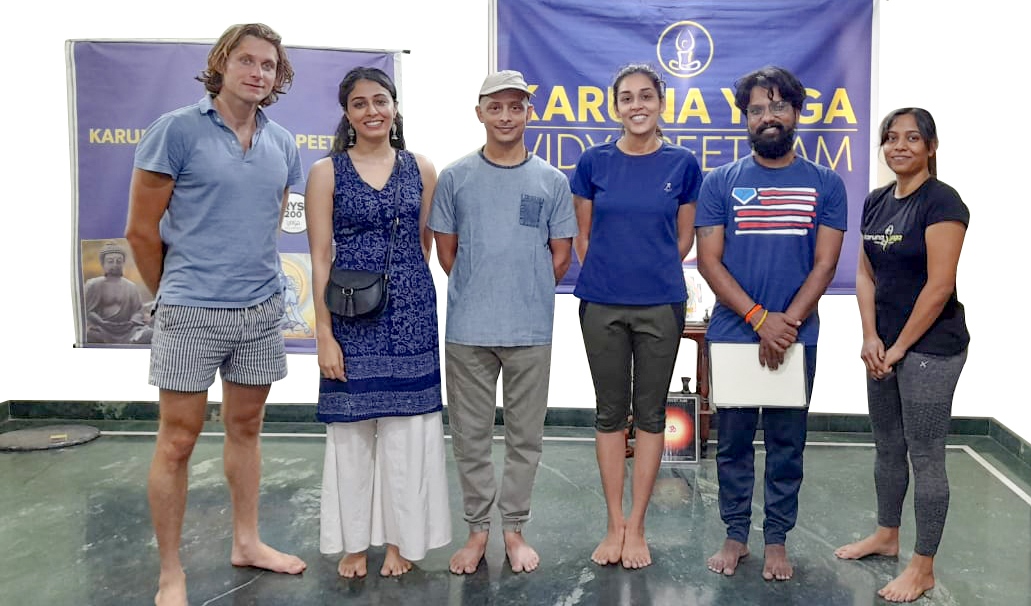
You will get to participate in yoga classes and workshops, allowing you to deepen your understanding and practice of yoga. At the end of the program, you will be equipped with the knowledge and confidence to teach yoga to others and to start your journey as a professional yoga teacher. Our 200-hour yoga teacher training program in Karuna Yoga Vidya Peetham is an intensive yet rewarding experience that will transform your life.
We place a strong emphasis on alignment and safety, ensuring that you learn how to practice and teach yoga safely and effectively. Upon completion of the 200-hour yoga training, you will receive a certification accredited by Yoga Alliance USA, which will allow you to teach yoga anywhere in the world. This is an internationally recognized certification and is highly respected in the yoga community.
This course is perfect for individuals who are looking to deepen their knowledge of yoga, enhance their practice, and embark on a career as a yoga teacher.
Join us in Karuna Yoga Vidya Peetham, Bangalore, India, for our 200-hour yoga teacher training course and experience the transformative power of yoga firsthand. We guarantee that you will leave our program feeling confident, knowledgeable, and ready to share your passion for yoga with the world.
Batches and Timings for
200 Hr Level -2 Teacher Training
Batches: Week-Day
Timing: 10:00am – 02:00pm
Duration: Two Months
Indian citizens: INR 45,000
Non-Indian citizens: USD 900
Module: Non-Residential
Batches: Morning Week Days
Timing: 06:30am - 09:30am
Duration: 2 Months
Indian citizens: INR 45,000
Non-Indian citizens: USD 900
Module: Non-Residential
Batches: One Month Intensive
Timing: 10:00am – 05:30pm
Duration: 40 Days
Indian citizens: INR 45,000
Non-Indian citizens: USD 1000
Indian citizens: INR 45,000
Non-Indian citizens: USD 1000
Indian citizens: INR 45,000
Non-Indian citizens: USD 1000
Non-Indian citizens: USD 1000
Non-Indian citizens: USD 1000
Module: Non-Residential
Batches: Evening Week Days
Timing: 05:00pm – 07:30pm
Duration: Two Months
Indian citizens: INR 45,000
Non-Indian citizens: USD 900
Indian citizens: INR 45,000
Non-Indian citizens: USD 900
Indian citizens: INR 45,000
Non-Indian citizens: USD 900
Indian citizens: INR 45,000
Non-Indian citizens: USD 900
Indian citizens: INR 45,000
Non-Indian citizens: USD 900
Non-Indian citizens: USD 900
Non-Indian citizens: USD 900
Module: Non-Residential
Batches: Noon Week Days
Timings:02:00pm - 05:30pm
Duration: Two Months
Indian Citizens: INR 45,000
Non-Indian Citizens: USD 9000
Indian Citizens: INR 45,000
Non-Indian Citizens: USD 9000
Indian Citizens: INR 45,000
Non-Indian Citizens: USD 9000
Indian Citizens: INR 45,000
Non-Indian Citizens: USD 9000
Indian Citizens: INR 45,000
Non-Indian Citizens: USD 9000
Non-Indian Citizens: USD 9000
Module: Non-Residential
Module: Non-Residential
Batches: Tailor Made
Timing: Self-Paced
Duration: Self-Paced
Course Fee: INR 55,0000
Module: Non-Residential
Which Style of Yoga taught in the 200 Hour Yoga Teacher Training?
The two words, “Ha” (Sun) and “Tha” (Moon), make up the word “Hatha,” which is of Sanskrit origin. Hatha Yoga simply means a stubborn or rigid type of yoga. This type of yoga is for maintaining the balance between the body, mind, and spirit. Hatha Yoga includes a complete set of physical postures, or asanas, with different breathing techniques. It is an ancient technique that has been practiced by people for a long time. Lord Shiva, also known as Adiyogi, discovers yoga and all its styles. So you can link Hatha yoga to Shaivism, but later on, Siddhas and Naths continue the tradition. The followers of Goraknath were also involved in this practice. Hatha Yoga is an essential style of yoga if you are at the beginner level.
Hatha Yoga is way more than doing asanas in a continuous series. It is actually a divine way to attain the finest stage of salvation. Hatha is also practiced to purify the Pingla Nadi (connected with the sun energy of the body) and the Ida Nadi (connected with the moon energy of the body). Nadis are also known as the energy channels of the body.
Karuna Yoga Vidya Peetham conducts a beginner & intermediate level course of 200 hours of yoga teacher training in Bangalore, India. The course explains Hatha Yoga through theoretical and practical classes taught by experienced gurus of the school. We also assist you in getting the most out of Hatha Yoga by doing it in the most enjoyable way possible.
Vinyasa Yoga simply helps you link every asana with breathing. It tells you how to move from one posture to another by making the right synchronization of the breath. The thing that makes a Vinyasa class different from other yoga classes is that no two Vinyasa classes are alike. There are a variety of postures in the Vinyasa style of yoga. The sequence is the same, but there is always variation in the asanas.
Surya Namaskar, also known as a “Sun Salutation,” is the most common yet most complex type of Vinyasa style. While performing Surya Namaskar, proper attention is given to the inhalation and exhalation processes. Its every movement is maintained by the inhalation and exhalation of the breath.It is highly beneficial for keeping you active while maintaining your health. Whether it’s about physical fitness, mental fitness, or emotional growth, Vinyasa Yoga is the best in every aspect.
Karuna Yoga Vidya Peetham, 200-Hour Yoga TTC in Bangalore, India includes theoretical and practical classes in the Vinyasa Style of Yoga. The theoretical class explains the origin of Vinyasa yoga and how it evolved over time. The practical class helps you gain the confidence to perform and teach vinyasa asanas with confidence.
Worldwide Accredited Certification
Karuna Yoga Vidya Peetham teacher training certificate course is accredited by Yoga Alliance USA.



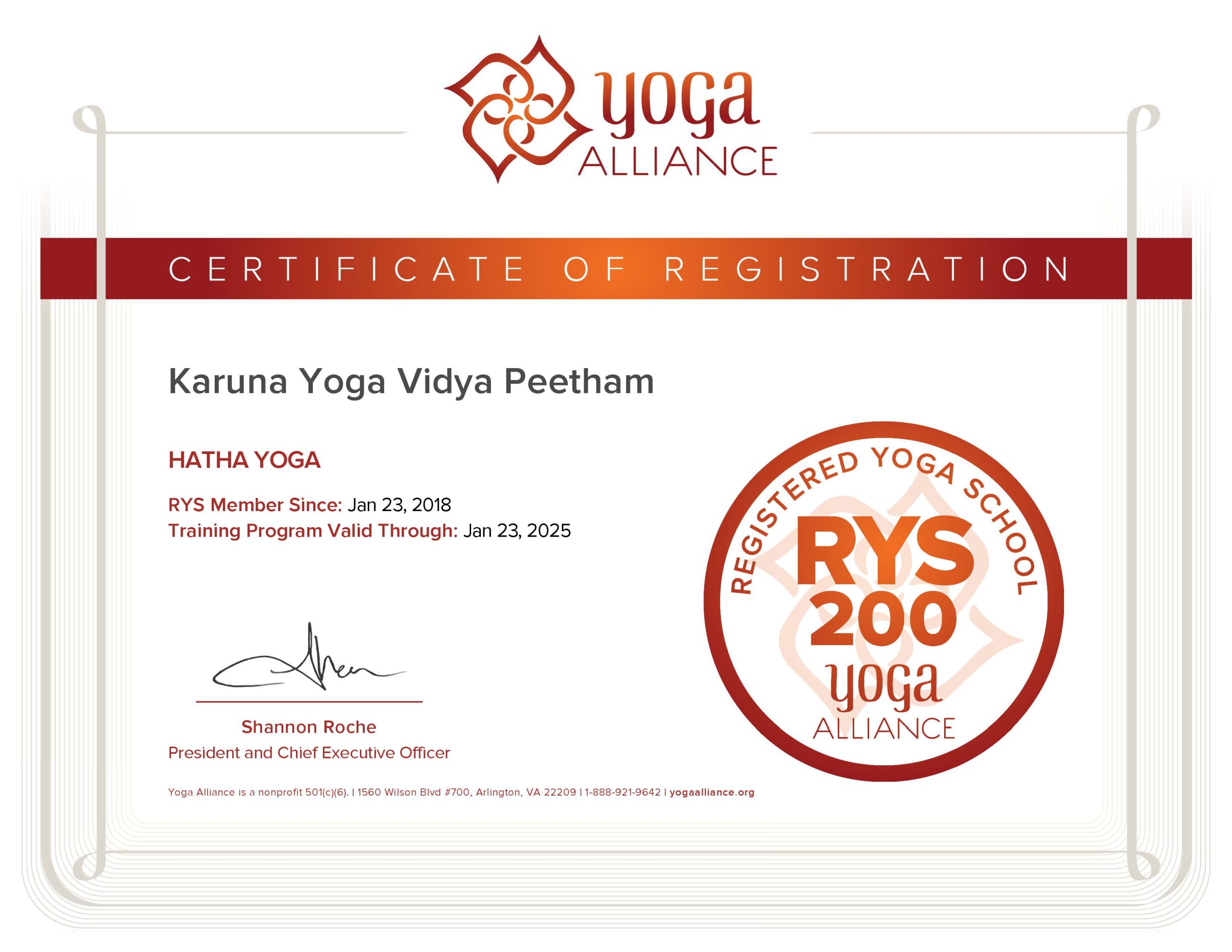
Karuna Yoga Lineage and Teaching Tradition
While contemporary in application and language, all our teachings are based on the thousands of years old Vedic and Yogic traditions of India.
The source of our practice and teachings is Swami Satyananda Saraswati from Bihar school of yoga, asana, pranayama, mudra, bandha, shat-karma, yoga Nidra, Trataka, Ajapa Japa, meditation. B. K. S. Iyengar alignment principle, restorative yoga, and Vinyasa style of yoga inculcated from Tirumalai Krishnamacharya Ashtanga Yoga, from Mysore.
We practice and teach Swami Satyananda Saraswati, B. K. S. Iyengar & Tirumalai Krishnamacharya. Yoga of Synthesis which aims at the harmonious development of a human being through the practice of all three styles of hatha yoga.
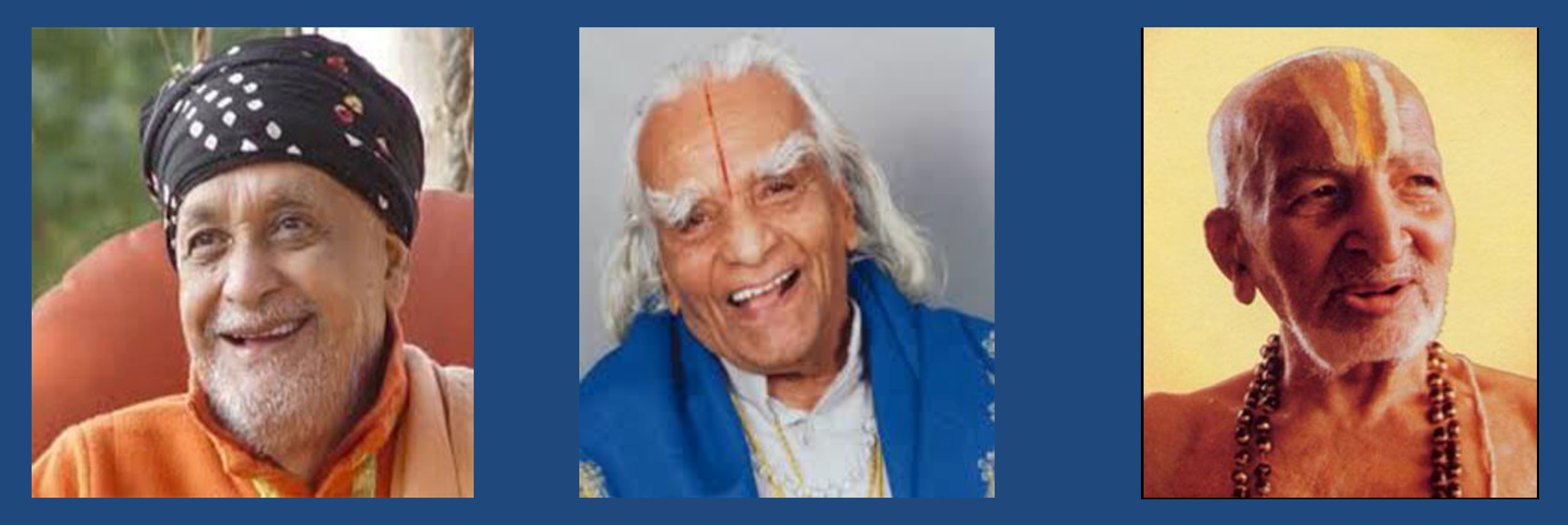
Meet Our Gurus

Dr. S. Karuna Murthy
(Hatha, Ashtanga Yoga & Kinesiology)
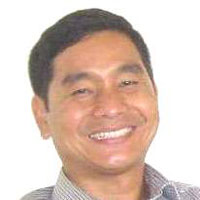
Dr. Chow Siddhartha
(Philosophy, Life-style & Meditation)

Yogi Sudhansu Mohanty
(body alignment and asana)
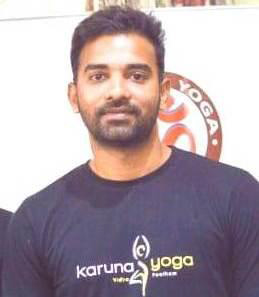
Dinesh Thakur E-RYT 500
(Vinyasa Flow & Anatomy Physiology)
Read What Our Alumni Say
about the Course





Video Reviews
Why choose Karuna yoga Vidya Peetham?

Explore Deep
Are you looking for a deeply proficient yoga teaching, beyond the surface level yoga based only on physical postures?

Teach With Professional
Do you want a professional yoga teacher training with in-depth knowledge and skills to teach others Professionally?

Get Authentic Wisdom
Do you want to learn yoga from authentic Indian teachers with a rich heritage and deep wisdom?
YTTC Course Detail Summary
Course Syllabus - 200 Hour Yoga Teacher Training In Bangalore, India
The following subjects are indicative of what you will study on this course:-
❏ Anatomy & Physiology
Deep insights into the inner workings of the human body
❏ Sanskrit
Learn Sanskrit names of postures and their pronunciation
❏ Asana Lab
Art of adjustments
❏ Field Training
50 hours of teaching yoga under the guidance of a certified lead yoga instructor.
❏ Teaching Methodology
Classroom Set up and Orientation, Class Levels and Prerequisites, Class Etiquette, Application of modifications for individual needs & Business approach
❏ Chants/Mantras
Proper recitation of chants and mantras can transform energy in different areas of the body as well as improve concentration, memory and focus
❏ Techniques Training and Practice
Transitioning into &transitioning out of Asana. Touch, somatic, and self-transformation. Beginner to intermediate level.
❏ Kinesiology
To understand different movement of human body at minor and major joints levels. Biomechanics of stretching
❏ Philosophy
The broader set of Vedic ideas that have influenced the development of modern Yoga
❏ Postural Integration
Advanced methodology
❏ Yoga philosophy
Theoretical and Applied
❏ Yoga Sutras
The spiritual framework of all Yogic practice
❏ Asana
Understanding the right way to practice them and their benefits.
❏ Prop usage
Using physical props to support postural understanding, enhance the benefits of the pose and facilitate healing
❏ Pranayama
Learn to interpret breathing patterns and provide practices to correct and improve physical condition
❏ Anatomy of the subtle body
Chakras, Pranas, Nadis & how these unseen energy structures play a role in our health
DETAILED SYLLABUS OF THIS COURSE
❏ Mantra Chanting
- Gayathri Mantra
- Maha Mrityunjaya Mantra
- Asato mā sad
- Saha nāv avatu
- Sarve bhavantu sukhinaḥ
- Sarveṣāṃ svastir bhavatu
- Pūrṇam adaḥ pūrṇam
- Patanjali Mantra
- Pranayama Mantra
- Surya Namaskara Mantra
- Astanga Yoga Mantra
- Mangala Mantra
- Gurur brahmā
- Dhyana Mulam
- Bhadraṃ karṇebhiḥ
- Mantra Chanting
- Śaṃ no mitraḥ
- Om Karam bindu
- Śanaih Sanaiḥ
- Laye sombhodayeth
- Pratahsmarana Mantra
❏ Surya Namaskara (sun salutation)
Beginners Level
- Surya Namaskara (Sun Salutation) Sivananada School of Yoga Style
- Surya Namaskara (Sun Salutation) Satyananada School of Yoga Style
- Surya Namaskara (Sun Salutation) Vivekananada School of Yoga Style
Intermediate Level
- Chandra Namaskara (Moon Salutation)
- Astanga Surya Namaskara – A
Advanced Level
- Astanga Surya Namaskara – B
❏ Foundation of Asana
- Hatha Yoga View on Asana
- Patanjali concept on Asana
- Beginners
- Intermediate
- Advanced
- Isometric static
- Dynamic Asana
- Standing Asana
- Forward Bending Asanas
- Backward Bending Asanas
- Vajrasana Group of Asanas
- Sitting Asana
- Meditation Asanas
- Spinal Twisting Asanas
- Relaxation Asanas
- Supine and Prone Asana
- Inverted Asanas
- Core Asana
- Hip Opening Asana
- Balancing Asanas
Asanas
Standing Asana
Beginners Level
- Samasthiti(upright or still)
- Tadasana – (mountain pose)
- Ardhakati Cakrasana(half lateral wheel pose)
- Vrksasana (tree pose)
- Ardha Uttanasana(standing half forward bend)
- Padahastasana (hand to foot pose)
- Ardha Chakrasana (half wheel pose)
- Utthita Vayu Muktasana(standing wind releasing pose)
Intermediate Level
- Garudasana (eagle pose)
- Utkatasana (mighty pose)
- Utthita Trikonasana (extended triangle pose)
- Parivritta Trikonasana (revolved triangle pose)
- Utthita Parsvakonasana (extended side angle pose)
- Parivritta Utthita Parsvakonasana (revolved extended side angle pose)
- Parsvottanasana(side intense stretch)
- Virabhadrasana -1 (warrior -1)
- Virabhadrasana -2(warrior-2)
Advanced Level
- Padangusthasana( holding the big toes)
- Ardha Chandrasana (half moon pose)
- Parivrtta ardha Chandrasana (revolved half moon pose)
- Parivrtta Baddha Parsvakonasana (revolved bound side angle)
- Urdhva Prasarita Ekapadasana(upward split one leg)
- Virabhadrasana -3(warrior-3)
- Ardha Baddha Padmottanasana (half bound lotus intense stretch)
- Natarajasana(Lord of the dance Pose)
- Prasarita Padottanasana(legs widespread intense stretch)
- Utthita Hasta Padangusthasana(intense arms hold big toe)
- Malasana (garland pose)
3.2. Kneeling Asana Beginners Level
- Vajrasana (diamond pose)
- Balasana(Child’s Pose) or Shashankasana ( moon or hare pose)
- Madukasana(Frog Pose) or Bhadrasana (gracious pose)
- Marjaryasana(Cat Pose)
- Vyaghrasana(Tiger Pose)
Intermediate Level
- Virasana (hero pose)
- Ustrasana(camel pose)
Advanced Level
- Parighasana (gate pose)
- Supta Virasana (recline hero pose)
3.3. Sitting Asana Beginners Level
- Sukhasana(Easy pose)
- Dandasana (Staff Pose)
- Swastik Asana(auspicious pose)
- Siddhasana(adept pose)
- Padmasana(lotus pose)
Intermediate Level
- Janu Sirsasana (Head to Knee Pose)
- Parivrtta Janu Sirsasana(revolved knee to head pose)
- Paschimottanasana(ugrasana or brahmacharyasana)
- Purvauttansana(east intense stretch pose)
- Gomukhasana(cow face resembling)
- Marichyasana(name of the sage mariachi)
- Ardha Navasana (half boat)
- Upavistha Konasana(wide angle seated forward bend pose)
- Baddha Konasana(bounded angle pose)
- Ardha Matsyendrasana (half spinal twist)
- Yogamudrasana(yoga gesture or psychic union pose)
- Simhasana(lion gesture)
- Parvatasana(mountain pose)
Advanced Level
- Ardha Padma Paschimottanasana(half lotus west intense stretch pose)
- Ardha Baddha Padma Paschimottanasana(half bounded lotus west intense stretch pose)
- Bharadvajasana(Bharadvaja was the father of drona)
- Paripurna Navasana (complete boat pose)
- Ubhaya Padangustasana(ubhaya – both, padangusta – big toe)
- Merudandasana (spinal column pose)
- Goraksasana(cowherd)
- Simhasana – 2(lion pose)
- Trianga Mukhaikapda Paschimottanasana(three limbs facing intense west stretch pose)
- Hanumanasana(front full split or hindu monkey god)
- Krounchasana(heron pose)
- Urdhva Padmasana(Upward Lotus Pose) or Lolasana (swinging pose)
- Akarna Dhanurasana(heel touches the ear as an archer pulls the bowstring)
- Eka Pada Raja kapotasana(single leg king pigeon pose)
- Eka Pada Sirasana(one leg behind head pose)
- Kukkutasana(cockerel pose)
3.4. Supine Asana (on back) Beginners Level
- Shavasana(corpse pose)
- Ananda Balasana (happy baby pose)
- Supta Pawanmuktasana (wind relieving pose)
- Setu Bandha Sarvangasana(bridge lock Sarvangasana)
Intermediate Level
- Jathara Parivartanasana(abdomen twisting pose)
- Salamba Sarvangasana(supported Sarvangasana)
- Matsyasana(fish pose)
- Supta Konasana(reclining angle pose)
- Urdhva Cakrasana(upward wheel pose)
Advanced Level
- Anantasana(Vishnu couch pose)
- Eka Pada Setu Bandha Sarvangasana (single leg bridge pose)
- Niralamba Sarvangasana (without support Sarvangasana)
- Supta Padangusthasana(supine holding big toe)
- Halasana(Plough Pose)
- Karnapidasana(ear pressure pose)
- Dwi Pada Viparita Dandasana(both feet reverse stick pose)
- Eka Pada Urdhva Dhanurasana(single leg upward bow pose)
- Pindasana in Sarvangasana(embryo or fetus pose)
- Urdhva Padmasana in Sarvangasana (upward lotus pose in sarvangasana)
3. 5. Prone Asana (abdomen) Beginners Level
- Makarasana (crocodile pose)
- Ardha Shalabhasana(half locust pose)
- Salabhasana (locust Pose)
- Sarpasana(snake pose)
- Bhujangasana(serpent pose)
- Ardha Dhanurasana (half bow)
Intermediate Level
- Dhanurasana(bow pose)
- Urdhva Mukha Svanasana(upward facing dog pose)
Advanced Level
- Parsva Dhanurasana(sideways bow pose)
- Bhekasana(toad or frog pose)
3. 6. Arm Balancing and Head Standing Asana Intermediate Level
- Phalakasana(plank pose) or Santolanasana (balancing pose)
- Chaturanga Dandasana(four limbed staff pose)
- Tolasana(scale pose)
- Purvottanasana(east intense stretch)
Advanced Level
- Bakasana(crane)
- Mayurasana (mayura means a peacock)
- Padma Mayurasana(lotus peacock pose)
- Astavakrasana
- Eka Pada Bakasana
- Eka Pada Galavasana
- Eka pada Koundinyanasana(Single Leg Sage Koundinyan Pose)
- Vasisthasana
- Kukkutasana(lifted cockerel pose)
- Salamba Sirsasana -1
- Salamba Sirsasana -2
Four aspects of pranayama
Pooraka or inhalation
Rechaka or exhalation
Antar kumbhaka or internal breath retention
Bahir kumbhaka or external breath
Pranic body Breath, health and pranayama
Breathing and life span
General notes for the practitioner
Natural breathing
Abdominal (or diaphragmatic) breathing
Thoracic Breathing
Clavicular Breathing
Full Yogic Breathing
Kapalbhati Pranayama (frontal brain cleansing breath)
Bhastrika Pranayama (bellows breath)
Nadi Shodhana Pranayama (psychic network purification)
Ujjayi Pranayama (the psychic breath)
Chandra Bhedana Pranayama (calming energy)
Surya Bhedana Pranayama (stimulating vitality)
Sheetali Pranayama(cooling pranayama)
Sheetkari Pranayama (hissing breath)
Bhramari Pranayama (humming bee breath)
Mudras and prana
A scientific look at mudras
Five Groups of Yoga Mudras
i) Jnana Mudra (psychic gesture of knowledge)
ii)Chin Mudra (psychic gesture of consciousness)
iii)Bhairava Mudra (fierce or terrifying attitude)
iv)Hridaya Mudra (heart gesture)
v)Shambhavi Mudra (eyebrow centre gazing)
vi)Nasikagra Drishti(gaze at tip of nose)
vii)Khechari Mudra (tongue lock)
viii) Shanmukhi Mudra (closing the seven gates)
ix)Vipareeta Karani Mudra (inverted psychic attitude)
x)Pashinee Mudra (folded psychic attitude)
xi)Tadagi Mudra (barrelled abdomen technique)
xii)Prana Mudra
xiii) Yoga Mudra (attitude of psychic union)
xiv)Manduki Mudra (gesture of the frog)
xv)Maha Mudra (great psychic attitude)
xvi)Maha Bheda Mudra (the great separating attitude)
xvii)Maha Vedha Mudra (the great piercing attitude)
xviii) Ashwini Mudra (horse gesture)
Mudras and the Elements
Chin Mudra while chanting ‘AAAA’
Chinmaya Mudra while chanting ‘OU’
Adi Mudra while chanting ‘MMMM’
Brahma Mudra while chanting ‘AUM’
- Jalandhara Bandha
- Moola Bandha
- Uddiyana Bandha
- Maha Bandha
Granthis
- Brahma Granthi
- Vishnu Granthi
- Rudra Granthi
- Relaxation
- Sankalpa
- Rotation of Consciousness
- Awareness of Breath
- Opposite Sensations
- Lightness/Heaviness
- Cold/Hot
- Anxiety/Calm
- Inner Space Visualization
- Rapid Image Visualization
- Repeat Sankalpa
- Finish
- Visualization Techniques
- Meadow filled with tall grass
- Golden light in your forehead
- Boundless Lake
- Heart as a Lotus Blossom
- Moon Rise
- Long walk into nature
- Ajapa Japa Practice
- Breathe awareness between navel and throat
- Constant ascending and descending breathe
- Ujjayi Breathing
- Mantra repetition with the breath
- Spontaneous mantra repetition
- Awareness of chidakasha
- Ending the practice
- Sideways Viewing
- Front and Side ways viewing
- Up and Down Viewing
- Rotational Viewing
- Near and distant viewing
- Trataka (concentrated gazing)
- Antar Trataka
- Shambhavi Mudra (eyebrow centre gazing)
- Nasikagra Drishti (nose tip gazing)
- Meditation on Breath
- Mantra Meditation (Sacred Syllable Chanting Meditation)
- Counting Beads
- Chakra Meditation
1. Jala Neti (nasal cleansing with water)
2.Sutra Neti (nasal cleansing with thread)
3. Vaman Dhauti (regurgitative cleansing)
4.Shankhaprakshalana(cleansing entire digestive tract)
1.1. Anatomy
1.2. Physiology
1.3. Anatomical Terminology
1.4. Directional terms
- i) Superior or cranial
- ii) Inferior or caudal
iii) Posterior or dorsal
- iv) Lateral
- v) Proximal
- vi) Distal
vii) Medial
viii) Anterior or ventral
Respiratory system & Functional Yoga
2.1. Gaseous Exchange
2.2. Respiratory System
- Nasal Cavity
- Pharynx
- Larynx
- Trachea (wind pipe)
- Bronchi
- Bronchioles
- Alveoli (Air sacs)
2.3. Lungs
2.4. Pleura
2.5. Bronchi
- 6. Pulmonary Ventilation
2.7. Respiration mechanism
- a) Shallow breathing
- b) Deep Breathing
- c) Unconscious control of breathing
- d) Conscious control of breathing
2.8. Lung Volume
Muscular System & Functional Yoga
3.1. Muscular tissues can be classified into
- Smooth, non-striated or involuntary muscles
- Cardiac muscle or myocardium
- Skeletal, striated or voluntary muscles
3.2. Characteristics of skeletal muscles
- i) Contractility
- ii) Excitability
iii) Extensibility
- iv) Elasticity
3.3. Functions of Muscles
- Movement
- Maintaining posture
III. Producing Heat & Temperature Regulation
- Circulation
3.4. Muscle fiber types & Functional Yoga
- Slow twitch muscle fibre (type -1)
- Fast twitch muscle fibre (type -2)
3.5. Aerobic (with oxygen) and Anaerobic (without oxygen) Exercise & Functional Yoga
3.6. Types of Muscle Contractions & Functional Yoga
- i) Isometric Contraction
- ii) Isotonic Contraction
- a) Concentric Contraction
- b) Eccentric Contraction
Skeletal System & Functional Yoga
- i) Cartilage
- ii) Tendon
iii) Ligament
iv)Fascia
v)Bursa
Types of bone and cartilage
4.2. Functions of the Skeletal System?
4.3. The main bones of the human skeleton are
- The axial skeleton
- The appendicular skeleton
4.4. Classification of Bones according to shape
- Long bones
- Short bones
- Flat bones
- Irregular bones
- Sesamoid bones
- Skeleton Joints
Joints classifications
- i) Fibrous joints
- ii) Cartilaginous joints
iii) Synovial joint
- 6. Synovial joints
4.7. Synovial joints classifications
- Hinge
- Ball and socket
- Pivot
- Gliding
- Saddle
- Planar
Kinesiology & Functional Yoga
8.1. Biomechanics and Kinesiology
8.2. Body Movements
Body Movements and Their Descriptions
- Flexion
- Extension
- Abduction
- Adduction
- Pronation
- Lateral flexion
- Rotation
- Medial rotation (internal rotation)
- Lateral rotation (external rotation) 11.Elevation
- Depression
- Dorsiflexion
- Plantar flexion
- Eversion
- Inversion
- Protraction
- Retraction
- Circumduction
Classroom Setup and Orientation
Layout of the room & Placing Mat
Voice and Language
Querying new students
Practiced yoga? Style? Duration? Frequency?
Any injuries
iii. Are you pregnant?
Daily work or lifestyle?
Any physical exercise?
Ethics in Teaching and Touching
i)Yama ii)Niyama
Practice Teaching Observation
Yoga Marketing
Transitioning into Asanas
Transitioning out of Asanas
Seven Principles of Hands on Adjustments
Principle 1: Teach What You Know
Principle 2: Ask Permission to Touch
Principle 3: Have Clear Intention
Principle 4: Move with the Breath Principle
5: Honor Safe Biomechanics
Principle 6: Teach Essential Asana Elements
Stability and ease Alignment principles
Transitioning in, refining, and transitioning out
Principle 7: Support Stable Foundations
Basic Arc Structure of Classes
11.1. Initiating the Yogic Process
2. Warming the Body
3. Pathway to the Peak
11.4. Exploring the Peak
11.5. Integration
Principles of Sequencing Asana
12.1. Applied Parinamavada(theory of transformation)
2. Move from Simple to Complex Asanas
3. Move from Dynamic to Static Exploration
4. Sattvic Effect: Cultivating Energetic Balance
5. Pratikriyasana(counter pose)
1.1. Meaning
1.2. Definition of Yoga
1.3.History of Yoga
Hatha Yoga Glimpse
2.2. Nadis
2.2.1. Ida, Pingala, Shushmna
2.2. Cakras
Purusharthas(Four attainments of life)
i) Dharma (Virtue)
ii) Artha (Wealth)
iii) Kama (Pleasure)
iv) Moksha (Emancipation)
3.1. Chaturvargas(Four stages of Life)
i) Brahmacharya Ashram
ii) Grihastha Ashrama
iii)Vanprastha Ashrama
iv)Sanyasa Ashrama
3.2. Karma Yoga (path of selfless action)
3.2.1. Types of Karma
i) Sanchita Karma or Stored Karma
ii) Agami Karma or Forthcoming Karma
iii) Prarabdha or Vartamana Karma or Present Karma
3.3. Jnana Yoga (path of knowledge)
3.3.1. Meaning
3.3.2. Jnana yoga(Adi Sankara, Vivekacudamani) Seven limbs of Jnana Yoga
3.4. Raja Yoga (path of royal yoga)
3.4.1. Aim of Raja Yoga
3.4.2. Practice (abhyasa) and dispassion (vairagya)
3.4.3. Astanga Yoga(eight limbs of yoga)
yama- social ethical code
niyama- personal ethical code
III. asana- posture
pranayama- control of life-force
pratyahara- sense withdrawal
dharana- concentration
VII. dhyana- absorption
VIII. Samadhi- ecstasy or super consciousness
Path of Devotion (Bhakti Yoga) Bhagavata Purana nine forms Bhakti
Taittiriya Upanisad
Annamaya kosha – food sheath
Pranamaya kosha – breath sheath
Manomaya kosha – mind sheath
Vijnanamaya kosha – intellect sheath
Anandamaya kosha – bliss sheath
- i) Trainee will be required to engage in:
- Self-Study
- Group Discussion
- Self-Practice
- Oral Presentation
- Mock Classes
- Submit daily & weekly assignments on the basis of the day’s lectures and discussions.
ii). There will be a practical and a theory exam on daily / weekly basis to assess the students on their learning, practice and teaching during the Teacher Training Course.
- Each student has to complete 50 hours of teaching yoga under the guidance of a certified lead yoga instructor.
- This can be completed within one month to maximum of three months, depending on the dedication and time commitment of the student.
- Upon completing the 50 hours, the student will be rewarded with his/ her certificate, affiliated by the yoga alliance USA.
What you can expect from us?
Experience the change as you indulge in the richness of yoga. Yoga has a rejuvenating effect on the mind and soul of individuals. If you opt for our 200-hour yoga teacher training, you can establish a connection between your spiritual existence and the universe. Spend some time nurturing yourself and bringing out the best version of yourself.




The program has an extremely professional approach. They are facilitated by skilled and experienced Master Teachers who offer the best and the richest form of education. We offer the best kind of training and techniques that are the well-suited for a 200 RYT certification level.
Is This Course For You?
Is This Course For You? Please view the checklist below to see if Karuna Yoga is a best match for your yoga Journey
Yes
- You desire yoga teacher certification
- You are looking for an in-depth training
- You want personal and spiritual transformation
- You want to experience a yogic lifestyle.
No
- You don't desire a yoga teacher certification
- You don't need more than a basic level of yoga knowledge
- You don't want personal and spiritual transformation at this point
- You don't have time to spend for course
- You are not interested in learning traditional yoga teachings
What You Should Know Before This Course
Skill Level Of 200 Hour Yoga Teacher Training Course In Bangalore, India.
It is a belief that you need to be flexible to enroll for a teacher training programme but that couldn’t be more far from reality as a flexible mind is much more important for the studies and practices of yoga. The body will slowly become more flexible by constant practice and time; thanks to the intense training you will undertake during the 200 hours yoga teacher training course you will improve your overall flexibility, both physical and mental. You don’t need to have any previous experience of yoga since we will walk you through the journey from the foundations.
All levels are welcome for this course, whether you are an experienced practitioner or not, our classes adapt to all levels. Our skillful teachers adapt the practice according to the different needs so you will never feel bored and you will find new things to learn every day.
This course can also be good for those who are already teaching but are missing to have an internationally recognized certification to be also able to open their own yoga studio.
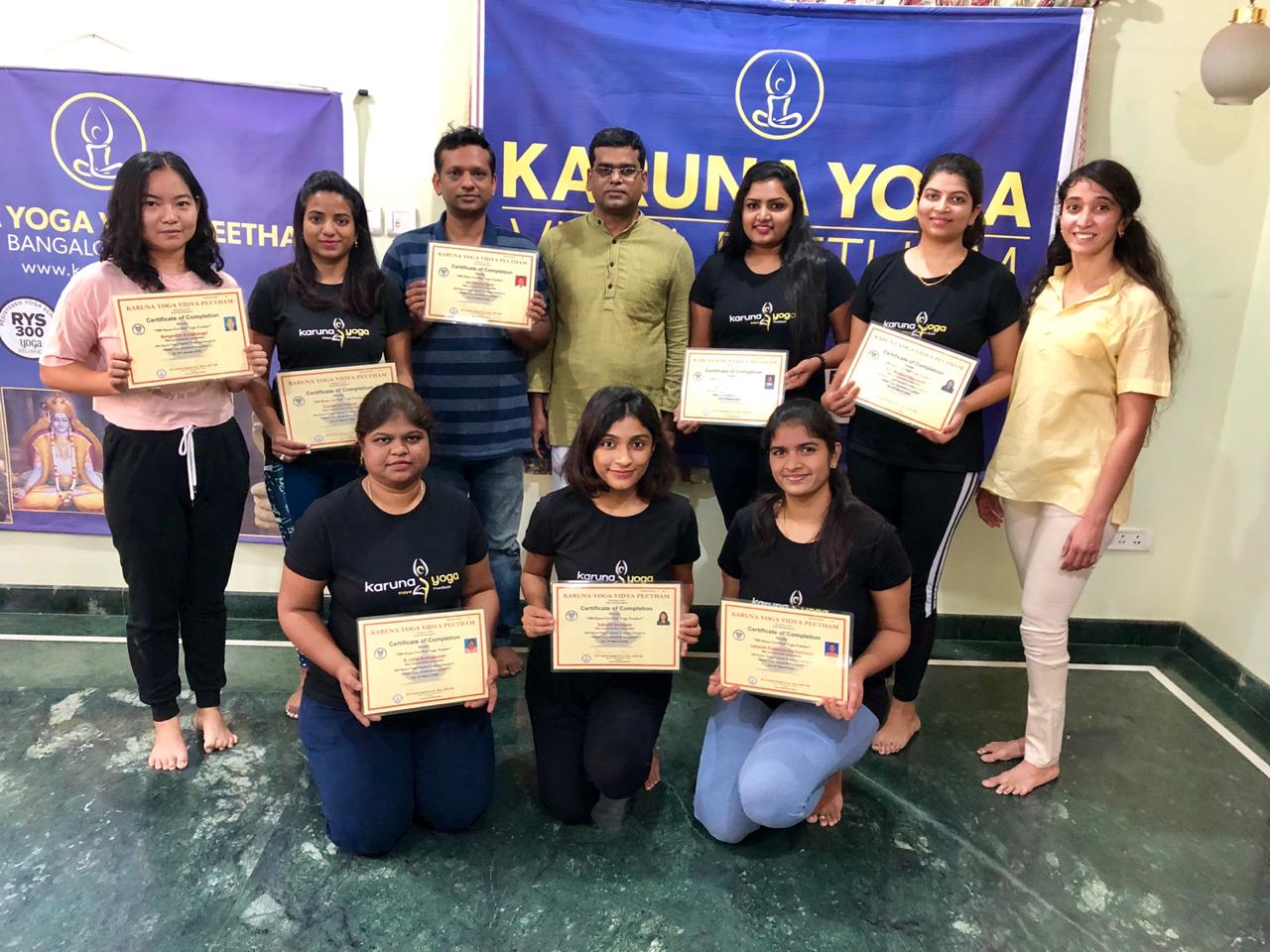
- Practice adapted to all levels.
- Practice adapted to any injuries or physical limitation.
- No previous experience needed.
Building the practice and studies from the foundation.
- No need to have a flexible body.
- Mental flexibility is needed.
- Overall strength and flexibility will improve during the course.
- Becoming a certified yoga teacher.
Prerequisites
A high degree of self-motivation is required for all aspects of the course. The practice and especially the teaching of yoga demand a high degree of self-discipline and purity. To ensure the success of the program, participants are required to attend all spiritual activities, meditation sessions, lectures and asana classes.
Meat, fish, eggs, black tea, coffee, alcohol, tobacco, drugs and nudity are prohibited during the course as they are counterproductive to the yoga practice. Participants who do not comply with the school rules may be dismissed from the course.
Rules for Students
Smoking and alcohol are strictly prohibited in the school. If you are having a fast any day, you have to inform the kitchen manager for avoiding food waste. Always make discipline, respect teachers and follow all rules. Always be on the time, you are late means will not be permitted to join the class.
Clear your books of account before departure. Before departure return your books, maps or any goods which you borrowed.
Refund Policy
An advance of course fees will not be refundable, only in the case of emergency students can join us on other schedules.
If a student cancels the course after joining it, we accept cancellation but course fees will not be refunded in cancellation. There is no charge of course cancellation.
Assessment and Certification
- The students are continuously assessed throughout the course at all levels.
- There will be a practical as well as written examination at the end of the course to evaluate the understanding of the philosophy of Yoga and skills of the students.
- Participant should pass all different aspects of the course to be eligible for the Yoga teacher Training Course.
Assessment is based on
- Regular attendance of all classes.
- Attitude and behaviour inside and outside of the ashram while attending the course.
- Performance and attitude in the practical asana, pranayama, bandhas and kriya classes.
- Hatha yoga teaching skills.
- Written daily summary of the main philosophy classes and Hatha yoga theory classes.
- Upon successful completion of the course students receive the Certificate of the Karuna Yoga.
❏ Guarantee
We guarantee the course will give you correct and sufficient knowledge of yoga, yogic philosophy, proper teaching skills, and enough practical training to teach others with ease and confidence.
❏ Post Course Support
❏ RYT 200
How to Register?
To register, please complete the online application form by clicking the ‘Apply Now’ button below. Upon receiving your application, we will review and confirm with you within two working days. Please note that our yoga certification courses in India fill up well in advance. Please apply in time to karunaayoga@gmail.com secure your place.
Yoga Teacher Training India FAQ
After this course, you will have the strongest foundation recommended for any good teacher. You can work full-time or part-time as a yoga teacher at a yoga studio, or you can start your own classes or a full-fledged studio.
Yes, to ensure proper personal attention and guidance to all students, each course has limited seats five to ten.
Sometimes it is possible to bring someone as a guest. Please write to us to check the availability.
Yes, even though the course is only four weeks / one month, our students agree that they learn more than they could in two years back home. This is because you will solely focus on yoga during the entire month of teacher training.
Everyone has some challenges, it is normal. A flexible mind is more important than a flexible body. The program will teach you how to work with different challenges.
Yes, this course does not require any previous education.
It’s the foundation course and will teach the most important principles and skills from scratch. All you need is a genuine interest in yoga. We recommend a regular practice of at least one year, but it is fully accessible to complete beginners.
Age from 18 begins, as long as you have a sincere desire to learn and you are physically fine you can follow this course.
This teacher training course is taught in basic English because the students come from all over the world. If you can read an English magazine, you will be able to follow the course.
We do not have a mandatory reading list, but we have a suggested reading list. We prefer that you first understand the concepts in the course and then read the books. This way, you can gain the most out of your reading.
Yes, if you don’t push yourselves too far. But please let us know in advance.
You will need a yoga mat, meditation cushion, and a blanket.
When you finish the course and the final practicums, you will be presented with the certificate on the last day of the course.
Yes, many of our students do not want to become professional yoga teachers, but they do this course to gain a solid foundation and deep knowledge for their personal practice and spiritual journey.
In our 200-hour yoga teacher training, you will learn the original yoga style,’ Hatha Yoga and Vinyasa ‘. This is the foundation style.
The final practicum consists of a simple theory and practical teaching exams. The teachers will prepare you for both. For your reference, the average passing rate is 98%.
Yes, at karuna yoga, we provide lifetime support to our students. You can contact the teachers anytime, even after you have completed your training.
To register as an RYT 200, please go to the Yoga Alliance website and follow the registration process and pay their membership fees. During the process, you will be asked to upload a copy of your certificate issued by us. Once you have completed the application, we will receive a notification to check and verify your application. Once we verify, you will be registered.
We don’t have deadlines, but our courses fill up well in advance. Therefore we recommend you reserve your seat as soon as you have decided to join our course.
For cancellations due to Covid-19, we offer free cancellations. In other cases, we offer a cheaper non-refundable fee structure and a refundable fee structure. Please drop us an email for full details.
You can get an invoice for your payment. If you have a company, you can put it in costs.
Yes, it is possible to pay in installments. Please drop us an email for details.
As of November 22, 2022, foreign nationals and citizens of India no longer need a self-declaration form, proof of vaccination, or a negative RT-PCR test to enter India.
However, symptomatic travelers must immediately quarantine in a designated quarantine facility subsequently for follow-up treatment. After arrival, travelers must self-monitor their health. Travelers must report to their nearest health facility or call the national or state helpline number in case of COVID-19 symptoms.
Most international travelers need to have a valid visa before traveling to India. It is easy to get an e-visa for India. Applicants of the eligible countries/territories may apply online at least four days before the date of arrival.
E-Tourist Visa Facility is Available for Nationals of the Following Countries/territories:
Albania, Andorra, Anguilla, Antigua & Barbuda, Argentina, Armenia, Aruba, Australia, Austria, Bahamas, Barbados, Belgium, Belize, Bolivia, Bosnia & Herzegovina, Botswana, Brazil, Brunei, Bulgaria, Cambodia, Canada, Cape Verde, Cayman Island, Chile, China, China- SAR Hongkong, China- SAR Macau, Colombia, Comoros, Cook Islands, Costa Rica, Cote d’lvoire, Croatia, Cuba, Czech Republic, Denmark, Djibouti, Dominica, Dominican Republic, East Timor, Ecuador, El Salvador, Eritrea, Estonia, Fiji, Finland, France, Gabon, Gambia, Georgia, Germany, Ghana, Greece, Grenada, Guatemala, Guinea, Guyana, Haiti, Honduras, Hungary, Iceland, Indonesia, Ireland, Israel, Jamaica, Japan, Jordan, Kenya, Kiribati, Laos, Latvia, Lesotho, Liberia, Liechtenstein, Lithuania, Luxembourg, Madagascar, Malawi, Malaysia, Malta, Marshall Islands, Mauritius, Mexico, Micronesia, Moldova, Monaco, Mongolia, Montenegro, Montserrat, Mozambique, Myanmar, Namibia, Nauru, Netherlands, New Zealand, Nicaragua, Niue Island, Norway, Oman, Palau, Palestine, Panama, Papua New Guinea, Paraguay, Peru, Philippines, Poland, Portugal, Republic of Korea, Republic of Macedonia, Romania, Russia, Saint Christopher and Nevis, Saint Lucia, Saint Vincent & the Grenadines, Samoa, San Marino, Senegal, Serbia, Seychelles, Singapore, Slovakia, Slovenia, Solomon Islands, South Africa, Spain, Sri Lanka, Suriname, Swaziland, Sweden, Switzerland, Taiwan, Tajikistan, Tanzania, Thailand, Tonga, Trinidad & Tobago, Turks & Caicos Island, Tuvalu, UAE, Ukraine, Uruguay, USA, Vanuatu, Vatican City-Holy See, Venezuela, Vietnam, Zambia and Zimbabwe.
